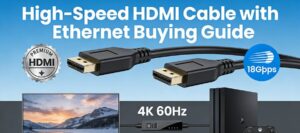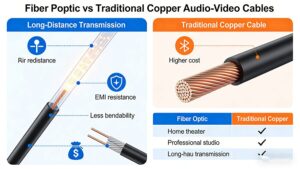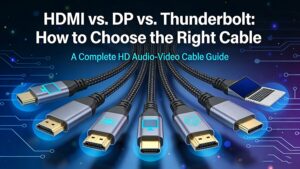En la era digital actual, nuestros dispositivos necesitan constantemente más opciones de conectividad. Tanto si eres un profesional que hace malabares constantemente con varios periféricos como si eres un usuario ocasional que quiere ampliar las capacidades de su dispositivo, es probable que te hayas encontrado con concentradores USB y bases USB. Pero, ¿en qué se diferencian exactamente y cuál es el más adecuado para usted? Averigüémoslo.
¿Qué es un concentrador USB?
Un concentrador USB es un dispositivo diseñado para ampliar el número de puertos USB de tu ordenador u otro dispositivo host. Es como un divisor multidireccional para tus conexiones USB. Con un concentrador USB, puedes tomar un único puerto USB y convertirlo en varios puertos, lo que te permite conectar varios dispositivos USB simultáneamente. Por ejemplo, si tu portátil sólo tiene dos puertos USB pero necesitas conectar un ratón, un teclado, una unidad flash y un disco duro externo, un concentrador USB puede resolver ese problema en un santiamén.
¿Cómo funciona un concentrador USB?
Un concentrador USB suele tener un puerto de subida, que se utiliza para conectarse al dispositivo anfitrión (como el ordenador), y varios puertos de bajada para conectar diversos periféricos USB. Cuando conectas un concentrador USB a tu ordenador, el concentrador actúa como intermediario, distribuyendo las señales de datos y alimentación del ordenador a los dispositivos conectados.
Tipos de concentradores USB
- Concentradores USB con alimentación: Estos concentradores vienen con su propio adaptador de corriente. Son ideales para dispositivos que consumen mucha energía, como los discos duros externos, ya que pueden suministrar energía suficiente para garantizar un funcionamiento correcto. Por ejemplo, si quieres conectar varios discos duros externos de gran capacidad para transferir grandes cantidades de datos, lo mejor es un concentrador USB con alimentación.
- Concentradores USB sin alimentación: También conocidos como concentradores alimentados por bus, dependen únicamente de la energía suministrada por el dispositivo anfitrión. Son más compactos y ligeros, por lo que resultan ideales para dispositivos de bajo consumo, como un ratón, un teclado o una unidad flash. Si utiliza el concentrador principalmente para conectar unos pocos accesorios pequeños, es probable que un concentrador USB sin alimentación satisfaga sus necesidades.
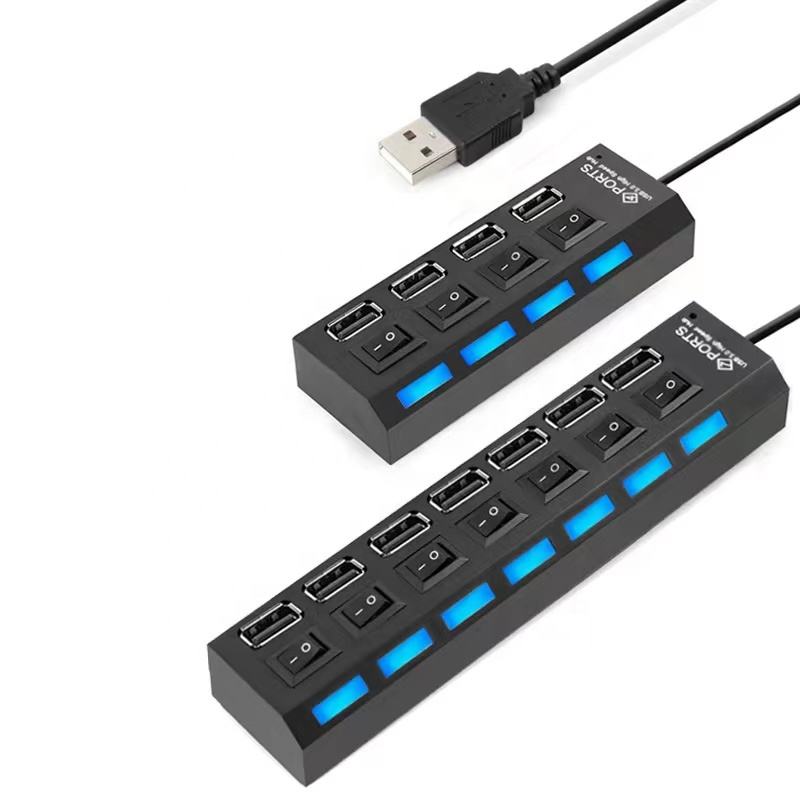
¿Qué es una base USB?
Una base USB es un dispositivo más avanzado y con más funciones que un concentrador USB. Aunque también sirve para ampliar la conectividad de su dispositivo, va un paso más allá al ofrecer una gama más amplia de puertos y funcionalidades adicionales. Una base USB puede convertir tu portátil en una completa estación de trabajo de sobremesa con una sola conexión.
Características de una base USB
- Salida de vídeo: Una de las características clave de una base USB es su capacidad para admitir salida de vídeo. Esto significa que puedes conectar tu portátil a uno o varios monitores externos, lo que mejora enormemente tu productividad y tus capacidades multitarea. Por ejemplo, si eres diseñador gráfico o editor de vídeo, poder trabajar con varios monitores puede mejorar significativamente tu flujo de trabajo.
- Conectividad de red: Muchas bases USB incluyen un puerto Ethernet que permite conectarse a una red por cable para obtener un acceso a Internet más rápido y estable. Esto es especialmente útil en un entorno de oficina, donde una conexión de red fiable es crucial.
- Funcionalidad de carga: Algunas bases USB están equipadas con capacidades de suministro de energía. Esto significa que no sólo pueden cargar el portátil, sino también otros dispositivos conectados, como el smartphone o la tableta. Es una práctica solución "todo en uno" para mantener tus dispositivos encendidos.
- Múltiples puertos USB: Además de los puertos de vídeo, red y carga, las bases USB también suelen tener varios puertos USB, incluidos USB-A y USB-C, para alojar distintos tipos de periféricos.
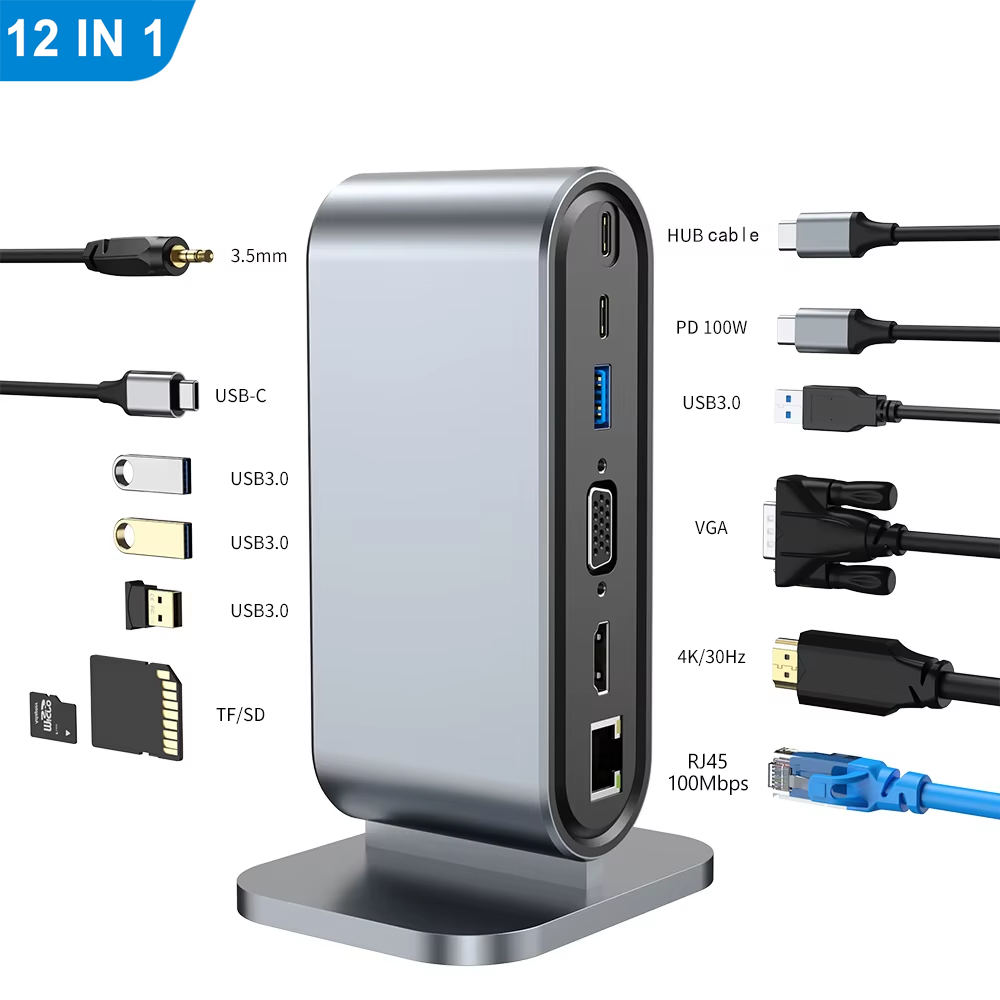
Diferencias clave entre concentradores USB y bases USB
|
Característica
|
Hub USB
|
Base USB
|
|
Función
|
Amplía principalmente los puertos USB
|
Amplía los puertos USB y ofrece funciones adicionales como salida de vídeo, conectividad de red y carga
|
|
Variedad de puertos
|
Principalmente puertos USB
|
Puertos USB, puertos de salida de vídeo (HDMI, DisplayPort, etc.), puerto Ethernet y, en ocasiones, puertos de audio.
|
|
Fuente de alimentación
|
Algunos tienen alimentación, otros no.
|
Normalmente alimentados, a menudo con capacidad de suministro de energía
|
|
Caso práctico
|
Ideal para la ampliación básica de dispositivos USB, como la conexión de algunos periféricos adicionales.
|
Lo mejor para crear una configuración de escritorio completa, especialmente para portátiles utilizados en un entorno de oficina o de oficina en casa.
|
|
Precio
|
Generalmente más asequible
|
Suele ser más caro debido a la funcionalidad añadida
|
¿Cuál necesita?
Si necesita conectividad básica
- Para viajes y desplazamientos: Si está en constante movimiento y necesita conectar varios dispositivos USB a su portátil, como un ratón, un teclado o una unidad flash, un concentrador USB es una gran elección. Su tamaño compacto y su portabilidad lo hacen fácil de llevar en el bolso. Por ejemplo, si viaja por negocios y necesita conectar rápidamente sus accesorios al portátil en una habitación de hotel o en la sala de espera de un aeropuerto, un concentrador USB es una solución sencilla.
- Para usuarios ocasionales: Si es un usuario ocasional que sólo necesita conectar de vez en cuando algunos dispositivos USB adicionales a su ordenador, un concentrador USB es suficiente. Tal vez quiera conectar una impresora o un disco duro externo de vez en cuando. En este caso, un concentrador USB ofrece una forma rentable de ampliar los puertos de su dispositivo.
Si necesita una estación de trabajo completa
- Para oficinistas: Si trabaja en una oficina y utiliza el portátil como dispositivo de trabajo principal, una base USB puede transformar su espacio de trabajo. Puede conectar su portátil a varios monitores, a una red cableada y a todos los periféricos necesarios con una sola conexión. Esto no sólo ahorra tiempo, sino que también mantiene tu escritorio organizado. Por ejemplo, si necesitas trabajar en varios documentos y hojas de cálculo simultáneamente, tener dos o más monitores conectados mediante una base USB puede hacer que tu trabajo sea mucho más eficiente.
- Para profesionales que requieren conectividad de alto rendimiento: Los profesionales como diseñadores gráficos, editores de vídeo o jugadores que necesitan una transferencia de datos de alta velocidad, compatibilidad con varios monitores y una conectividad de red fiable se beneficiarán enormemente de una base USB. La capacidad de conectarse a monitores de alta resolución y dispositivos de almacenamiento externo de alta velocidad a través de una base USB es esencial para su trabajo.
En conclusión, tanto los concentradores USB como las bases USB tienen sus propias ventajas y están diseñados para satisfacer necesidades diferentes. Si conoce las diferencias entre ellos y evalúa sus propias necesidades, podrá decidir con conocimiento de causa qué dispositivo es el más adecuado para usted. Tanto si elige un simple concentrador USB para una conectividad básica como una base USB repleta de funciones para crear una estación de trabajo completa, podrá aumentar la funcionalidad de sus dispositivos y mejorar la experiencia general del usuario.


